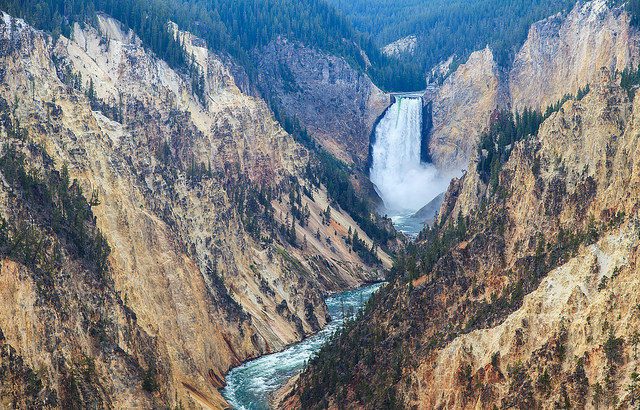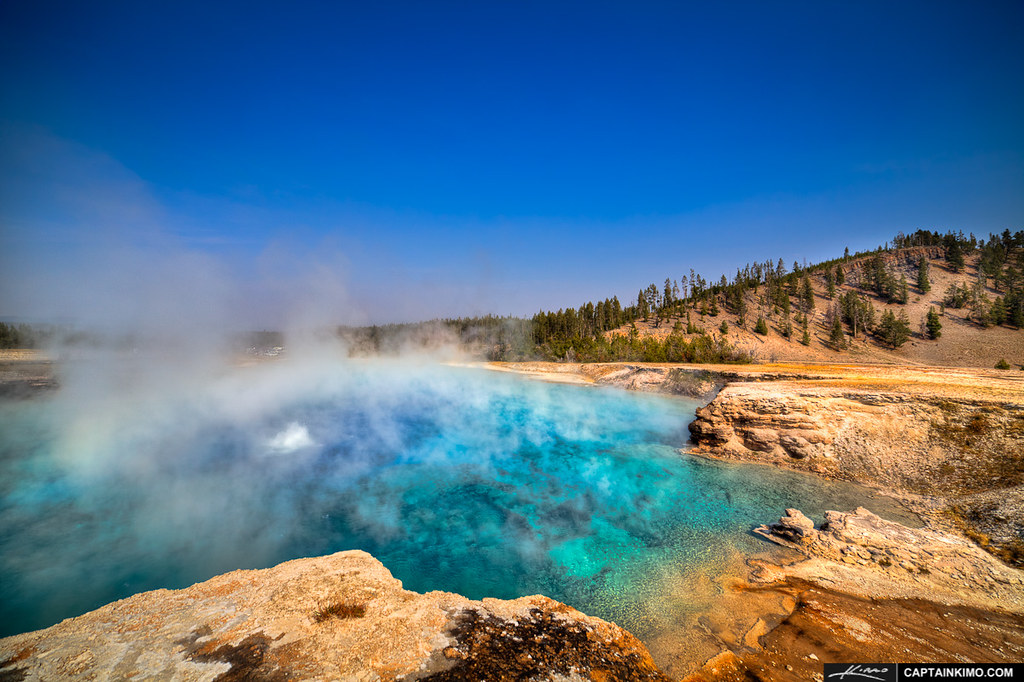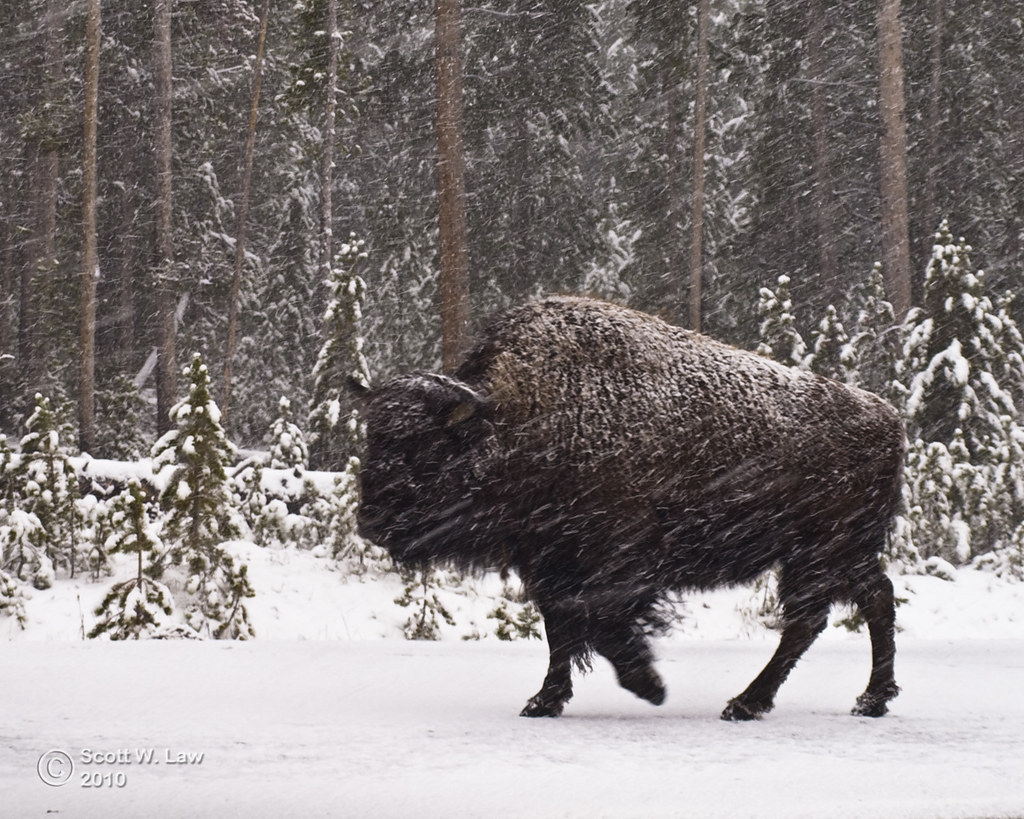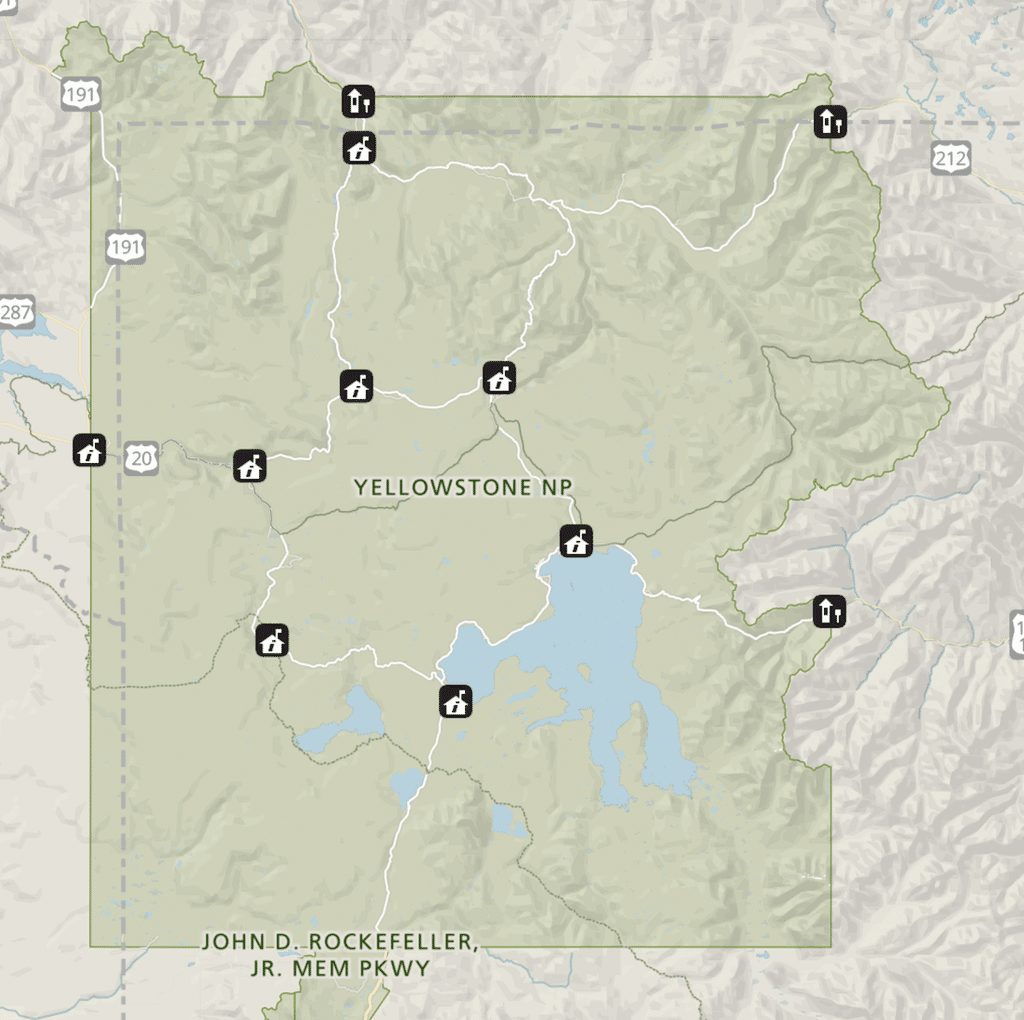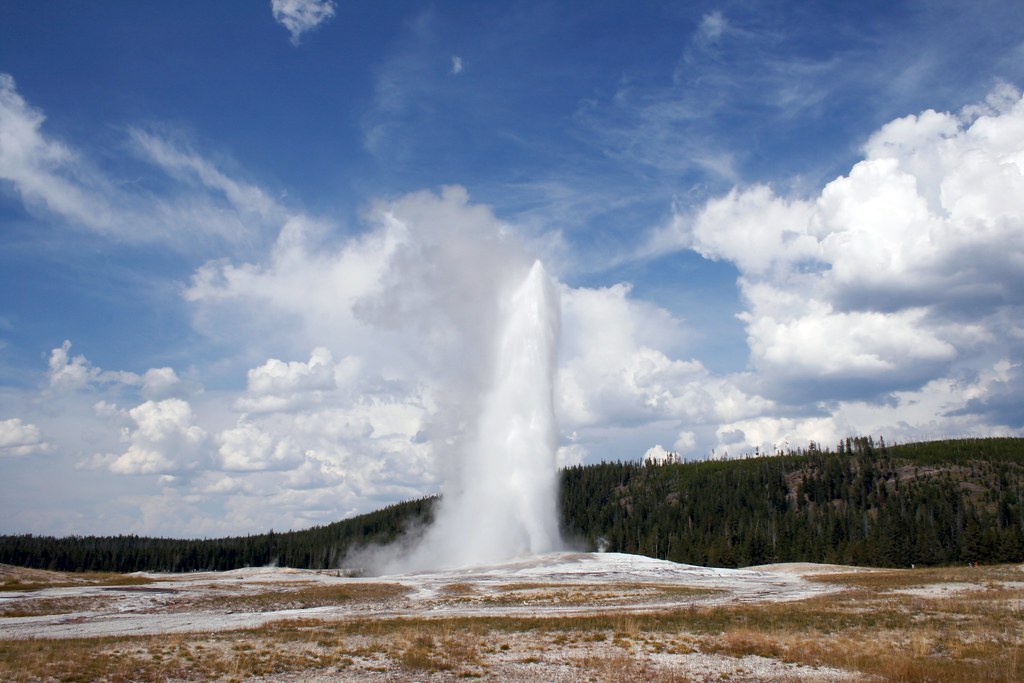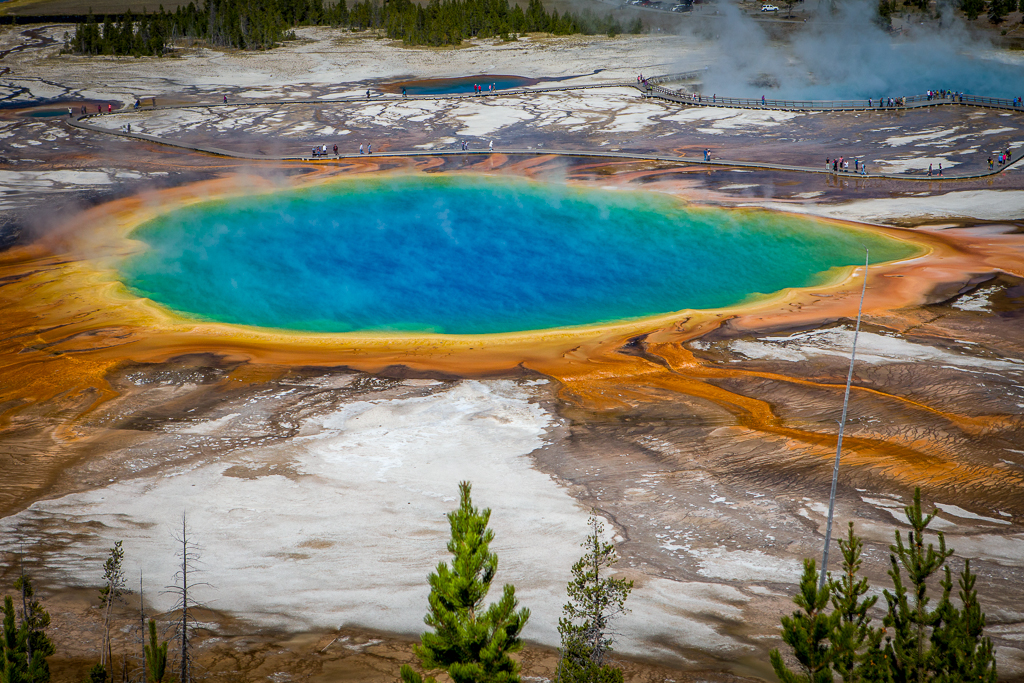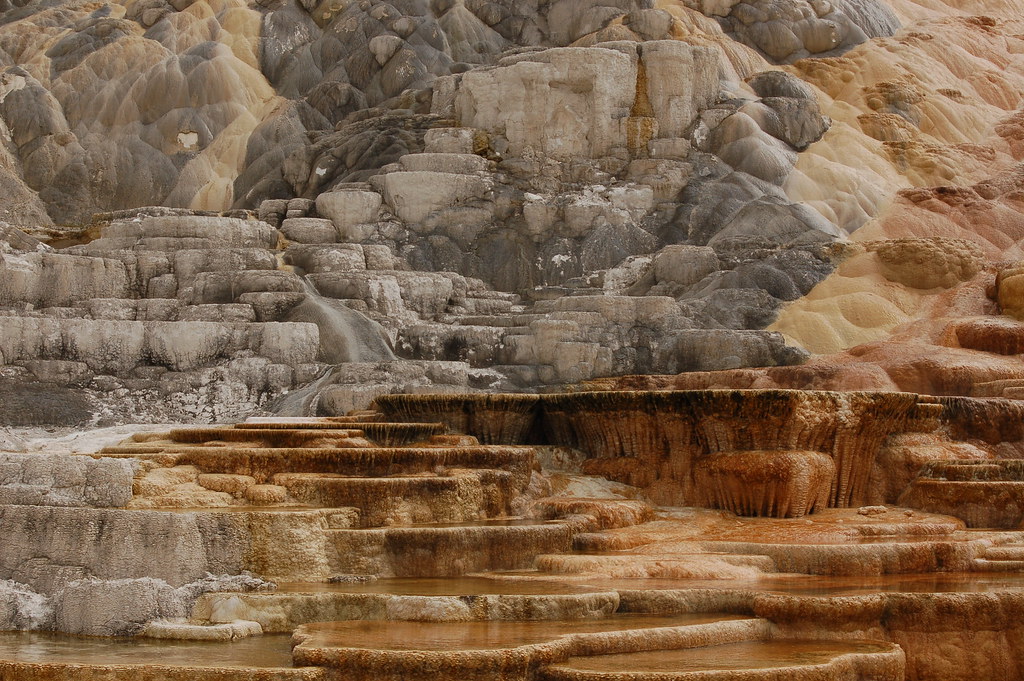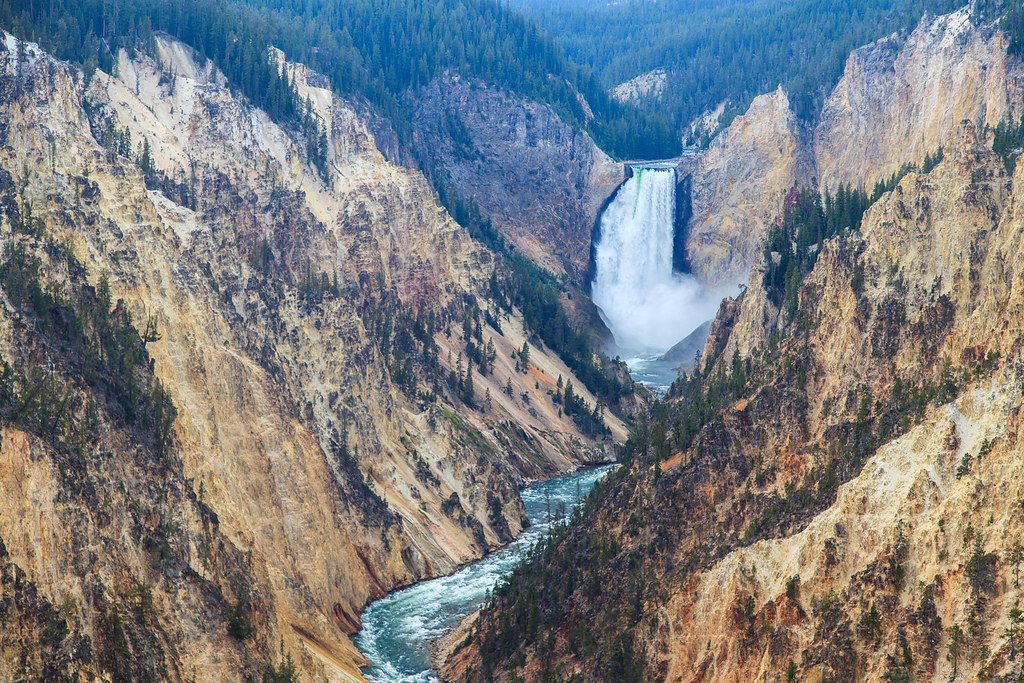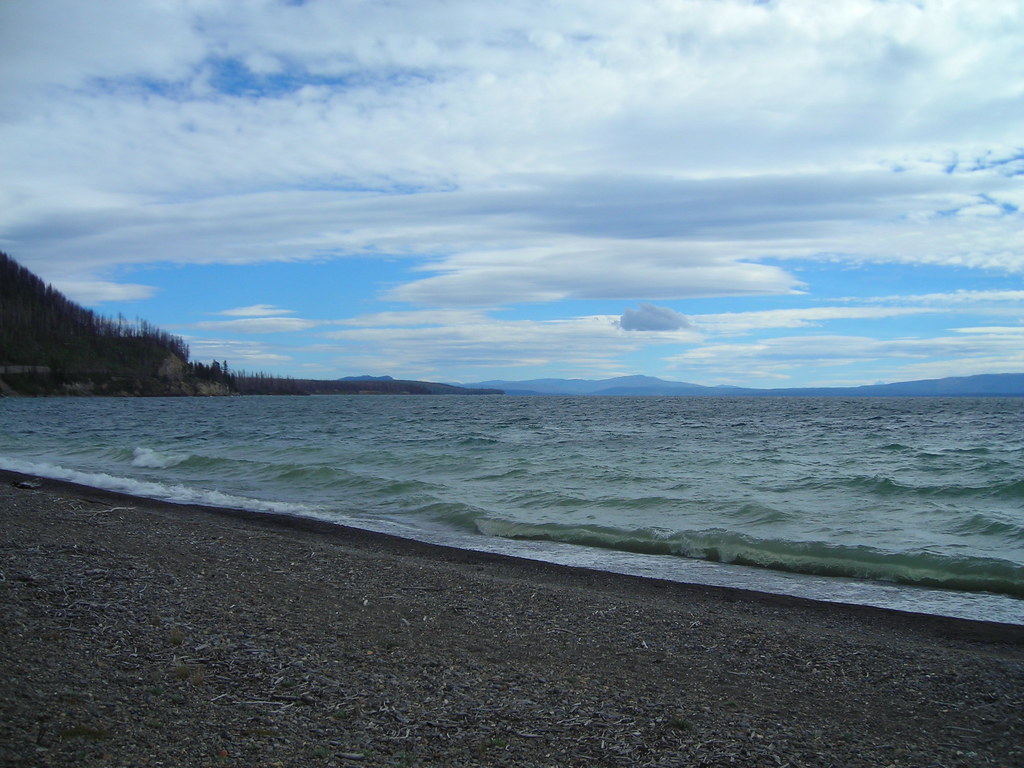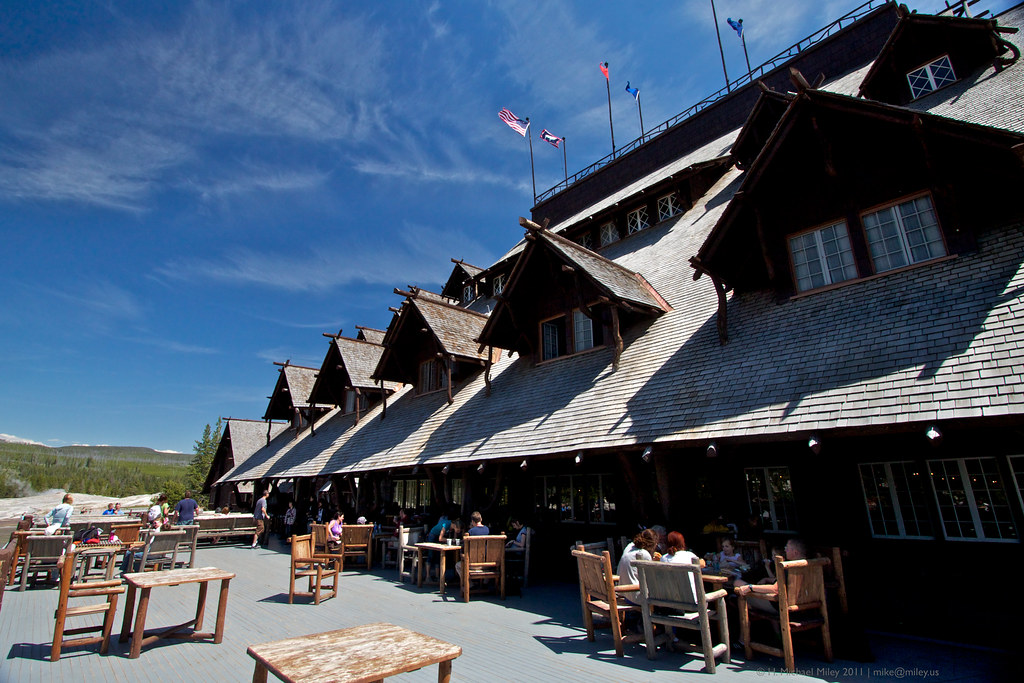Yellowstone National Park is one of the most well-known national parks in the world. It’s home to stunning scenery like the Grand Canyon of the Yellowstone and the famous, Old Faithful.
But there is a lot to do at this huge national park and it’s easy to get overwhelmed with so many options for lodging, hikes, and things to do.
This article will breakdown Yellowstone National Park and tell you everything you need to know to help you plan a great visit.
Tip: Use WalletFlo for all your credit card needs. It’s free and will help you optimize your rewards and savings!
Yellowstone National Park History
Yellowstone was established as a national park under President Ulysses S. Grant on March 1, 1872.
Geology
Yellowstone National Park is located over one of the most geologically dynamic areas on Earth.
Before Yellowstone was pushed over the hot spot where it is today, the area was actually submerged under a vast sea. From the Precambrian era up to the Mesozoic area about 66 million years ago, this area was a combination of shallow oceans, title flats, sand dunes, and plains.
Yellowstone supervolcano
This area is home to the Yellowstone Caldera, the largest volcanic system in North America. The caldera has been dubbed a “supervolcano” because it was formed by massive explosive eruptions.
The magma chamber found beneath Yellowstone is estimated to be approximately 37 miles long and 18 miles wide.
The current caldera was created by a massive eruption that took place 640,000 years ago and released more than 240 cubic miles of ash and rock.
To put that eruption into perspective, it was more than 1,000 times larger than the 1980 eruption of Mount St. Helens.
But that wasn’t even the most violent eruption to occur there.
The most violent known eruption occurred around 2.1 million years ago and ejected 588 cubic miles of volcanic material and created the rock formation known as the Huckleberry Ridge Tuff and created the Island Park Caldera.
There was also a smaller eruption 1.3 million years ago, which formed the Henry’s Fork Caldera.
Each of the three eruptions released huge amounts of ash all across North America and likely caused huge impacts to weather patterns world-wide and perhaps even led to the extinction of some species.
The floor is breathing?
There’s still a lot of magma underneath Yellowstone and some of it might be as little as 3 to 8 miles beneath Sour Creek Dome and 8 to 12 miles beneath Mallard Lake Dome.
These domes actually lift up and subside as magma or hydrothermal fluids upwell or subside beneath them. In fact, the entire caldera does the same thing (just not as much as the domes).
The movement of the caldera floor over the past century has led the floor to tilt toward the south which has caused Yellowstone Lake’s southern shores to subside leaving some trees standing in water.
It’s pretty unreal to think about so much movement is taking place on the the Earth’s surface at Yellowstone National Park.
Human history
Native Americans have lived in the Yellowstone region for at least 11,000 years.
They didn’t leave behind a lot of evidence but archeologists have found distinctive stone tools and projectile points, which have led them to believe that they likely hunted mammals and ate berries, seeds, and roots.
As the Ice Age came to end, this area became an area where several tribes thrived, as it was the convergence of the Great Plains, Great Basin, and Plateau Indian cultures.
For centuries, Native Americans hunted, fished, gathered plants, quarried obsidian, and utilized the area’s special thermal features for religious and medicinal reasons. These groups included the Cayuse, Coeur d’Alene, Bannock, Nez Perce, Shoshone, and Umatilla.
Obsidian that could be used for weapons and tools as well as to field dress buffalo, was a crucial natural resource to the area and arrowheads made of Yellowstone obsidian have been located in the Mississippi Valley, further supporting that this was a major trade area.
Wildlife at Yellowstone
Animals usually feed during early morning and evening and so it’s more likely you’ll see them around that time.
Bears begin emerging from hibernation in March and April when you might see them grazing in roadside meadows but as the summer approaches they head to higher elevations. If you’re trying to find wolves, winter might be the bet time of year.
Here are some sites according to the NPS where you might find the different types of wildlife.
- Fishing Bridge: Grizzly bears
- Hayden Valley: Bison, black bears, elk, grizzly bears, wolves
- Lamar Valley: Bison, black bears, bighorn sheep, elk, grizzly bears, mule deer, pronghorn, wolves
- Mammoth Hot Springs: Bison, black bears, elk, mule deer
- Madison: Bison, elk
- North Entrance: Bighorn sheep, bison, elk, pronghorn
- Northeast Entrance: Moose
- Old Faithful: Bison, elk
- South Entrance: Moose
- West Thumb: Elk, moose
It’s really important to remember that you’re not at a zoo when you enter Yellowstone and that these are wild animals.
Here are the guidelines that the National Park Service provides for encounters with wildlife.
- Never approach or pursue an animal to take its picture: use binoculars or telephoto lenses to get a better view.
- If an animal moves closer to you, back away to maintain a safe distance.
- If you cause an animal to move, you’re too close.
- It’s illegal to willfully remain near or approach wildlife, including birds, within any distance that disturbs or displaces the animal.
- Park in roadside pullouts when watching/photographing animals: do not block traffic.
- Stay in or next to your car when watching bears. If a bear approaches or touches your car, honk your horn and drive away to discourage this behavior.
- Watch our wildlife safety videos and see the power of large wild animals.
Where is Yellowstone National Park?
Yellowstone National Park is located in the northwest corner of the state of Wyoming but there are small parts of the part in Montana and Idaho.
Approximately 96 percent of Yellowstone National Park is located in Wyoming, three percent in Montana, and the remaining one percent in Idaho.
The park is 2,219,789 acres in area, which is actually larger than the states of Rhode Island and Delaware.
Yellowstone National Park Map
You can find a map of Yellowstone National Park here and the NPS full map here.
Yellowstone National Park Weather
Most of Yellowstone National Park sits at an elevation of 6,000 feet above sea level (or even higher).
This results in weather than can often be unpredictable, full of big temperature swings, rain, or snow during every month of the year.
So not matter what time you visit, you should always bring: a warm jacket, rain gear, and lots of layers.
Summer
In the summer, daytime temperatures are often around ºF (25ºC) and occasionally rise to 80ºF (30ºC) at some of the lower elevations.
Evenings and nights are usually cool but at the higher elevations it’s possible that the temperatures could drop below freezing.
Thunderstorms are common in the afternoons so be prepared for potential rains.
Fall and Spring
In the fall and spring, the temperatures during the day range from 30ºF to the 60ºF (0º to 20ºC) but the overnight lows can be very low, getting down to the single digits (-5ºC to -20ºC).
Many people head to Yellowstone to catch the fall foliage which can usually best be seen from late September to early October.
Snow is common in the spring and fall with accumulations that can amount to 12 inches within a 24-hour period.
Winter
Temperatures in the winter at Yellowstone range from zero to 20ºF (-20ºC to -5ºC) throughout the day.
It’s not uncommon to have sub-zero temperatures, especially at night or at areas with higher elevations. Snowfall is highly variable and the average is 150 inches a year.
The record low temperature is -66ºF (-54ºC)!
Here are the monthly averages via the NPS.
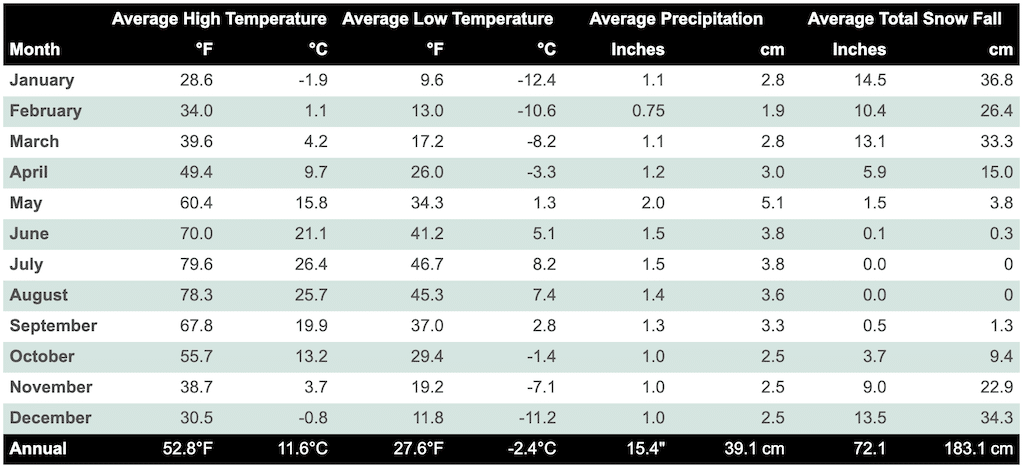
Best time to visit Yellowstone
The best times to visit are probably from April to May and between September and November.
The summer is going to offer you the most ideal weather but the crowds are going to be huge. If you can venture out during the fall or spring, the crowds should be thinned out and the weather should still be nice.
Related: REI Co-op World Elite Mastercard Review
Things to Do at Yellowstone National Park
There’s so much to see at Yellowstone this article could go on for forever.
Below I’ll give you some of the top things to do for each area you can in Yellowstone.
The park is divided into several areas
- Old Faithful
- Maddison Norris
- Mammoth Hot Springs
- Tower-Roosevelt
- Canyon Village
- Fishing Bridge, Lake Village & Bridge Bay
- Grant Village & West Thumb Area
Old Faithful Area
The old Faithful Area consists of different areas:
- Upper Geyser Basin
- Midway Geyser Basin
- Lower Geyser Basin
Old Faithful
Old Faithful is one of the most famous national park attractions in the United States.
You can find Old Faithful in the Upper Geyser Basin. Here, within one square mile there are at least 150 of these hydrothermal features but only five major geysers are predicted regularly: Castle, Grand, Daisy, Riverside, and Old Faithful.
It’s not common to be able to predict geyser eruptions but Old Faithful has been predictable since its discovery although the time between eruptions has grown.
Old Faithful usually erupts every 94 minutes, give or take about 10 minutes. The height of the geyser can vary from 106 feet to 180 feet but averages 130 feet.
The eruptions usually last about 1.5 to 5 minutes and the water at the vent is a steaming hot 203ºF (95.6ºC).
Thermal features change constantly within the park and it is possible that Old Faithful may stop erupting someday so don’t put it off for too long.
How to see Old Faithful
You can watch the eruptions from the the Old Faithful viewing area and walk the boardwalks that go around the geyser and through the Norris Geyser Basin.
If you’re interested you can watch Old Faithful erupt live on Yellowstone’s webcams.
Grand Prismatic Spring
The Grand Prismatic Spring — the famous brightly colored hot spring found in the Midway Geyser Basin at Yellowstone — is one of the most iconic sites of all of the National Parks. Its vivid rings stretch 370 feet across forming the largest hot spring in all of Yellowstone National Park.
The range of colors found inside the hot spring are the product of a different water temperatures that facilitate the growth of certain kinds of bacteria depending on their temperature.
It can be explored via the Grand Prismatic Spring Overlook Trail. This is a 1.2-mile there-and-back trail that begins and ends at the same trailhead. The trail usually opens in May and you should note that parking is limited.
There’s also the Midway Bluff trail, which isn’t marked on park maps but it can be found on the east side of the Grand Loop Road (south of the Midway geyser basin parking lot) where you can pull off the road and begin the hike.
This is a social trail which means it might not be kept up so you should always check with park rangers before embarking.
Lower Geyser Basin
The Lower Geyser Basis is a large area of hydrothermal activity that can be viewed via a boardwalk trail at Fountain Paint Pots and by car along the three mile Firehole Lake Drive.
Firehole Lake Drive is a one-way drive where you will find the sixth geyser that can be predicted by the staff: Great Fountain.
This geyser only blows twice-a-day and the predictions allow for a 2 hour +/- window so leave yourself plenty of time if you want to witness this geyser.
Lone Star Geyser
An easy round trip hike of 4.8 miles will get you to the Lone Star Geyser. This geyser only erupts about every three hours, so you’ll need a bit of patience.
There is a logbook, located in a cache near the geyser, and you’re encouraged to log the eruptions you witness.
The trailhead is east of Kepler Cascades pullout, 3.5 miles southeast of Old Faithful overpass on Grand Loop Road.
Hikes
- Fairy Falls Trail
- Grand Prismatic Spring Overlook Trail
- Howard Eaton Trail (Old Faithful Area)
- Lone Star Geyser Trail
- Mallard Lake Trail
- Mystic Falls Trail
- Observation Point Trail
- Sentinel Meadows & Queen’s Laundry Trail
Observation Point Trail is a 1.1 mile round trip that provides you with a birds-eye view of the geysers near the historic Old Faithful Inn. It sits about 200 feet above Old Faithful and it’s a great way to experience the geyser, especially early in the morning when the crowds are thin.
Tip: Use WalletFlo for all your credit card needs. It’s free and will help you optimize your rewards and savings!
Mammoth Hot Springs
Mammoth Hot Springs Terraces
The Mammoth Hot Springs Terrace is a must-see while in Yellowstone.
The description one visitor gave to Mammoth Hot Springs gives you an idea about this place.
“No human architect ever designed such intricate fountains as these. The water trickles over the edges from one to another, blending them together with the effect of a frozen waterfall.”
These otherworldly springs formed from limestone and are in a constant flux and their appearance is always changing.
You can explore the hot springs via a boardwalk (with many stairs) and/or the Upper Terrace Drive. Many people spot wild elk on their visits.
Hiking
You can find out more about the day hikes in this area here.
- Beaver Ponds Trail
- Beaver Ponds Trail
- Blacktail Deer Creek to Yellowstone River Trail
- Bunsen Peak Trail
- Lava Creek Trail
- Mammoth Hot Springs Trails
- Osprey Falls Trail
- Rescue Creek Trail
- Sepulcher Mountain Trail
- Wraith Falls Trail
Read more about what you can do in the Mammoth Springs Area.
Tower-Roosevelt Area
Calcite Springs Overlook
The Calcite Springs Overlook can be accessed via a short walk from a turn out point.
It gives you a an exceptional view of the Yellowstone River at the narrowest section of the Grand Canyon of the Yellowstone.
Looking down you’ll notice the bleached cliffs of the canyon and in cooler weather, you’ll even see steam rising from geothermal vents. Something else to look for is the line of hexagonal columns of basalt running across the canyon, which were formed by lava flows about 1.3 million years ago.
Tower Fall
The hike out to Tower Fall is a 0.9 mile heavily trafficked out and back trail. This is one of the popular trails so you can expect crowds when it’s opened during the summer. You’ll get great views of the falls along with views of the river as well.
Hikes
Here are some hikes you can look into for this area:
- Garnet Hill Trail
- Hellroaring Trail
- Lost Lake Trail
- Slough Creek Trail
- Specimen Ridge Day Hike Trail
- Trout Lake Trail
Here are some other things you can do in the area.
Canyon Village Area
Grand Canyon of the Yellowstone
This huge canyon is roughly 20 miles long, more than 1,000 feet deep, and 1,500 to 4,000 feet wide. There are two waterfalls that form major highlights of the park. The Upper Falls is a 109 ft. drop while the Lower Falls is almost triple that at 308 ft.
If you want to get some great views of the Grand Canyon of the Yellowstone then you should consider doing one of the drives.
The North Rim Drive has walkways at Lookout Point and Brink of the Lower Falls, which lead to views of both waterfalls. According to the NPS, the longest stretch of accessible trail can be accessed from parking lots at Lookout Point or Grand View, but you can also see the Lower Falls from Red Rock and Inspiration points.
If you go along the South Rim Drive, you can see the Lower Falls at Artist Point, from Uncle Tom’s Trail, and from a few places along the South Rim Trail. The Upper Falls can be seen from two viewpoints at Uncle Tom’s Point.
You can also visit the Brink of Upper Falls from a viewing area just off the Grand Loop Road south of Canyon Junction, between the entrances to North and South Rim drives.
Hayden Valley
Hayden Valley is an excellent place to view wildlife, including grizzly bears, particularly in the spring and early summer when they may be preying upon newborn bison and elk calves.
Large herds of bison are often seen in the spring and early summer and during the fall rut. Coyotes are often seen in the valley.
Bird life is abundant in and along the river. A variety of shore birds may be seen in the mud flats at Alum Creek. Ducks, geese, and American white pelicans cruise the river.
Bird watchers should look for bald eagles, northern harriers, and sandhill cranes.
NOTE: Do not approach bears or wolves on foot within 100 yards (91 m) or other wildlife within 25 yards (23 m). If you cause an animal to move or change its behavior, you are too close!
Hikes
- Cascade Lake Trail
- Chittenden Road – Mount Washburn Trail
- Dunraven Pass – Mount Washburn Trail
- Grebe Lake Trail
- Howard Eaton Trail (Canyon Area)
- Mount Washburn Spur Trail
- Observation Peak Trail
- Ribbon Lake Trail
- Seven Mile Hole Trail
- Artist Point to Point Sublime
The Artist Point to Point Sublime will offer spectacular views of the canyon. You wont see the falls on this hike but the sweeping views of the canyon are spectacular themselves. The hike is rated as moderate and is 2.6 miles round trip.
Fishing Bridge, Lake Village & Bridge Bay
Watch Fish from Fishing Bridge
Once upon a time Fishing Bridge was one of the hot spots for fishing trout but in an effort to preserve the fish, a ban was put into place 1973. However, the bridge is still a popular place to watch fish in their natural habitat.
Natural Bridge Trail
Consider taking the 2.5 miles roundtrip hike to check out a 51-foot natural bridge which was cut through a cliff of rhyolite rock by the Bridge Creek. The trail is closed until early summer while bears feed on spawning trout in Bridge Creek.
You can read more about these activities here.
Hikes
- Avalanche Peak Trail
- Elephant Back Mountain Trail
- Natural Bridge Trail
- Pelican Creek Nature Trail
- Pelican Valley Trail
- Storm Point Trail
The Elephant Back Loop Trail is a 3.6 mile roundtrip hike of moderate difficulty. It’s a very popular day hike and offers fantastic views of Yellowstone Lake and the The Lake Village area from its perfectly places benches atop the summit.
Grant & West Thumb Area
West Thumb Geyser Basin
The West Thumb area is the largest geyser basin on the shores of Yellowstone Lake and was the first Yellowstone feature to be written about in a publication by Daniel T. Potts, a trapper, back in 1827.
Try to check out Abyss Pool, a beautiful hot spring of the West Thumb Geyser Basin with a depth of over 50 feet.
Another popular site is Fishing Cone.
In the late 1800s, folks would fish in the surrounding waters and then drop their fish into the Fishing Cone hot spring and boil the fish for eating. It became quite a hit and for years, park Superintendent P.W. Norris even demonstrated it to tourists.
Today, it’s no longer allowed and for good reason — Fishing Cone is a geyser that can erupt up to 40 feet and has burned wanderers getting too close in the past.
Hikes
- Duck Lake Trail
- Lewis River Channel/Dogshead Trail
- Riddle Lake Trail
- DeLacy Creek Trail
- West Thumb Geyser Basin Trail
- Yellowstone Lake Overlook Trail
The Duck Lake Trail is a popular and easy, one mile roundtrip hike that takes you through a new growth forest and wide beach areas and offers great views of the Yellowstone Lake.
Another popular hike is the Lake Overlook Trail, which is a 2 mile loop hike of moderate difficulty. It send you up to a beautiful lookout across Yellowstone Lake toward the Absaroka Mountains — you can even see the Grand Tetons.
Yellowstone National Park Lodging and Hotels
Yellowstone National Park Lodges operates nine lodges within the park, containing more than 2,000 rooms. They are all open from late spring through fall, but only two are open in the winter: Old Faithful Snow Lodge and Mammoth Hot Springs Hotel.
Here are the Yellowstone lodges you can check out:
- Canyon Lodge
- Grant Village Lodge
- Lake Hotel
- Lake Lodge
- Mammoth Hotel and Cabins
- Old Faithful Inn
- Old Faithful Lodge
- Old Faithful Snow Lodge
- Roosevelt Lodge
Of course there are plenty of hotels and lodges that you can in nearby towns.
Yellowstone National Park Camping
Yellowstone offers 12 campgrounds with over 2,000 sites.
When choosing a campground you want to think about what nearby attractions are close since many of these are within walking distance of the park’s highlights. Also, some of the campsites offer ranger talks which can be a cool experience.
But you also want to check to see which campgrounds have amenities like toilets, showers, etc.
- Bridge Bay Campground
- Canyon Campground
- Fishing Bridge RV Park
- Grant Village Campground
- Indian Creek Campground
- Lewis Lake Campground
- Madison Campground
- Mammoth Campground
- Norris Campground
- Pebble Creek Campground
- Slough Creek Campground
- Tower Fall Campground
Yellowstone National Park Lodges manages reservations for five of these campgrounds but the rest are first-come, first-served.
You can check to see when these campsites are available here.
Yellowstone National Park RV Parks
When you’re taking your RV through Yellowstone you need to be mindful about certain routes which can be difficult to navigate with your RV.
The Fishing Bridge Campground is the only park campground with full hook-ups along with a dump station.
The West and North Entrances will provide you with the most direct access to major park attractions like Mammoth Hot Springs and Old Faithful.
Find out more helpful tips for RVing here.
Yellowstone National Park Facts
- It was the world’s first national park (1872)
- It has more than 300 active geysers
- it has more than 290 waterfalls.
- The highest point in the park is 11,358 feet at Eagle Peak
- The lowest point in the park is 5,282 feet at Reese Creek
- It has anywhere from 1000 to 3000 earthquakes every year
- It is 5% covered by water; 15% by grassland; and 80% by forests
Daniel Gillaspia is the Founder of UponArriving.com and the credit card app, WalletFlo. He is a former attorney turned travel expert covering destinations along with TSA, airline, and hotel policies. Since 2014, his content has been featured in publications such as National Geographic, Smithsonian Magazine, and CNBC. Read my bio.

